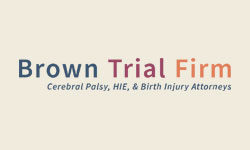Understand the causes of breech baby complications after birth, and problems later in life
Around 5 percent of births are breech, according to the most recent data. In a standard pregnancy, the baby’s head is pointed downward to make it easier for delivery. During a breech birth, however, the baby’s feet are pointed downward. In many cases, the baby could have been in a breech position the entire pregnancy before turning a few weeks before delivery.
If the baby stays in breech position during labor, it could cause a few issues that need to be addressed before and during delivery in order to ensure that the birth results in a healthy baby and a healthy mother. Doctors should be trained to identify and correct breech position, or be able to recommend a C-section if a breech birth places undue risk on the health of the baby or mother.
Causes of breech births
If a doctor informs you that your baby is breech, there are a few different presentations that could be indicated:
- Frank
- Footling
- Complete
In each of these breech positions, the baby’s feet and buttocks are pointed downward—but in a slightly different manner. It’s not always clear why a breech pregnancy or birth occurs.
Sometimes, multiple pregnancies can be the cause. A pregnancy with multiple babies at one time can also result in at least one being in the breech position. If there is too much room in the uterus, then it usually gives the baby more room to turn around. While most babies tend to turn in the proper direction before delivery, some just stay in the position that they are most comfortable in the uterus.
How to tell if your baby is breech
If you reach 35 or 36 weeks and your baby still hasn’t turned to the head-down position, then it could be considered a breech baby. It usually takes until this time for the baby to get into the proper delivery position.
As your baby gains more weight over the final weeks of pregnancy, it can be harder for your baby to turn around. When you visit your doctor, they can tell if your baby is breech by feeling your stomach or performing an ultrasound to look at the position.
Complications of a breech birth
A breech pregnancy isn’t really dangerous for the mother or the baby until delivery. When in breech position, the baby could get stuck in the birth canal due to the feet and legs possibly spreading apart. If the baby gets stuck, then it could result in the baby’s oxygen supply being cut off. This could then result in brain damage or various other issues for the baby’s immediate and long-term health.
One thing doctors must consider is whether or not it’s safe for the mother to deliver a baby in the breech position. In some situations, a C-section may be the best option in order to decrease the risk of further complications. Even though a C-section is considered major surgery, it could be the best choice to make, especially if there are signs that the baby’s heart rate is decelerating during the labor process.
Turning a baby in breech position
If your doctor sees that your baby is breech, there are a few ways that they can attempt to turn the baby. First, your doctor can perform what’s called an “external cephalic version.” This procedure involves physically rotating the baby from the outside by placing pressure on your abdomen to roll the fetus into the correct position. This often takes place between 36 and 38 weeks, and can be a bit uncomfortable as it may cause uterus contractions.
Keep in mind that if there’s enough room, your baby might flip around again to a breech position. Two people usually perform the version procedure, and your baby will need to be monitored to ensure that the heart rate doesn’t begin dropping, which is an indication that the procedure should be stopped.
Inversion is another option for turning a fetus in the womb, but it should be discussed with your doctor. This involves turning your body upside down in some way to try to get the baby to turn as well. You could prop your hips on a pillow while turning your body or try to stand on your hands while in a swimming pool.
The role of medical negligence in breech birth
Breech position can happen naturally, but negligence might play a role if your doctor sees that your baby is in a breech position and doesn’t tell you about it—or the doctor doesn’t do anything to try to turn your baby. Medical negligence can also occur if your doctor knew of the breech position during delivery and didn’t take the proper precautions to ensure a safe delivery, such as performing a C-section when necessary.
If your baby suffered a birth injury during a breech birth, consider consulting with an attorney to discuss if there’s sufficient evidence that a breech position was present and you were not warned—or that nothing was done during the delivery process.
Laura Brown is a nationally respected birth injury attorney who can help you get the compensation you deserve for long-term complications resulting from a breech birth, such as broken bones, skull fracture, or a hemorrhage in the brain. You may also be eligible for compensation if your baby died as a result of a breech delivery.
- Cerebral Palsy
- Caput Succedaneum and Cephalohematoma
- Neonatal Intracranial Hemorrhage (Childbirth Brain Bleeds)
- Hydrocephalus (Extra Fluid in the Brain Cavity)
- Cervical Dystonia
- Hemiplegia (Brain or Spinal Cord Injury)
- Hemorrhagic Stroke
- Neonatal Stroke
- HIE
- Periventricular Leukomalacia (PVL) Brain Injury
- Infant Seizures
- Spastic Diplegia (Spasticity in the Legs)
- Top Risks for Birth Injuries
- Fetal Alcohol Syndrome
- Facial Paralysis
- Spinal Cord Injuries
- Bell’s Palsy
- Brachial Plexus Nerves & Erb’s Palsy
- Klumpke’s Palsy
- G-Tubes for Newborns
- Medical Errors
- Cesarean Section & Birth Injury
- Negligence in Brain Cooling Treatment
- Craniosacral Therapy
- Occupational Therapy
- Speech Therapy
- Transition From Pediatric to Adult Healthcare
- Surgical Options for Spastic Cerebral Palsy
- Fetal Intolerance to Labor
- Jaundice (Kernicterus)
- Breech Position
- Placental Complications
- Umbilical Cord Problems
- Uterine Rupture
- Cervical Incompetence (Insufficiency)
- Blighted Ovum
- Necrotizing Enterocolitis (NEC) - Intestinal Inflammation
- Cephalopelvic Disproportion
- Meconium Aspiration Syndrome
- Amniotic Fluid Embolism
- Birth Injury from Premature Delivery
- Developmental Delays
- Abnormal Cord Insertion
- Infections at Birth
- Chorioamnionitis Bacterial Infection
- Premature birth
- Oxygen Deprivation
- Listeria
- Birth-Acquired Herpes
- Placenta Previa
- Placental Abruption
- Mismanaged Fetal Malposition
- Rapid Labor
- Obesity Related Birth Injuries
- Intrauterine Growth Restriction
- Blood Clots During Pregnancy
- Ectopic Pregnancy Misdiagnosis
- Myths & Facts About Birth Injuries
- Bacterial Vaginosis
- Gestational Diabetes
- Maternal Mortality Risk
- Oligohydramnios (Low Amniotic Fluid)
- Infections During Pregnancy
- Excessive Bleeding During Pregnancy
- Congenital Syphilis


